You’ve seen the imagery all over town: that old dude with white hair and the big pointed red hat. You know those pesky black-faced fellas he hangs out with. The ones who’ve whipped pepernoten at your head. You’ve joined in the heated Zwarte Piet debate. And you’ve eaten your chocolate initial at work. BUT what really is the deal with this whole Sinterklaas thing?
Basically, all you need to know is that Sinterklaas is the most beloved of all Dutch holidays and traditions. And one, Dutch people are fiercely proud of. Don’t you dare go messing about with this very gezellig affair! Check out our handy guide below to help you survive the madness.
[sdpl-ad5]
[divider]Everything you need to know about Sinterklaas[/divider]
Q: Where does this old dude and his black-faced friends come from?
A: Sinterklaas is said to have originated from St. Nicolaus, the Bishop of Mira, who lived in Turkey in the 3rd century. According to the legend, he saved the town from starvation, revived a couple of dead children, and offered gifts of dowries to poor girls so they didn’t have to become prostitues. Hence, a pretty saintly dude.
Q: How does he get to the lowlands?
A: Nowadays, he sails in from Spain on a boat in late November and rides about the town on a white horse named Amerigo (don’t ask) with a handful of black-faced friends who throw things at people.
Q: Huh? Who are these black guys? Bodyguards? Elves?
A: These friends, Zwarte Piets, are Sint‘s mischievous helpers and they can be seen through town violently whipping hard-stone like cookies (aka: pepernoten) at children and passerby’s. Duck!
Q: I don’t get it. Why are their faces painted black?
A: Please. Save yourself the trouble and don’t go asking this question in your Dutch workplace. You won’t make any friends. You can speak your mind here.
Q: Wait. Am I allowed to say anything critical about the Sinterklaas tradition?
A: No.
Q: Ok…back to the basics then. When is it officially celebrated?
A: Get out your Dutch-people agendas! Although he makes his first appearance mid- November, Sinterklaas doesn’t get into the full swing of things until December 5th.
Q: This is the poem and presents stuff right?
A: Yeppers. On the eve of the 5th (pakjesavond) children place their shoes by the fireplace (although hardly any Dutch homes have them), by the radiator (how the heck do the presents get through that?) or by the door (for the brighter Dutch children) and eagerly await their presents.
Q: What do they get?
A: Back in more modest times, presents consisted of mandarin oranges, chocolate letters (the initial of your first name), chocolate coins or marzipan figures. Surprisingly, no Dutch licorice or dairy! Nowadays, full fledged gift giving is in effect with the average Dutch home spending upwards of 130 EUR on presents.
Q: Why did my boss write me a sarcastic poem?
A: Adults get into full swing by writing witty poems to poke fun (or publicly chastise) their family or friends and often accompanied by a gift exchange (similar to a “Secret Santa“). The poems are often funny and of course, involve Dutch directness!
Q: This whole Sinterklaas dude seems pretty familiar. Are you saying the Dutch invented the North American Santa Claus?
A: Closely related Sinterklaas figures are celebrated in Germany, Switzerland, Austria, Belgium as well as French Flanders. Scandinavian folklore has a “nisse” character who is pretty similar. Santa Claus is thought to be a combination of Sinterklaas and the British Father Christmas.
Phew! That should cover the basics! Now go out, eat some pepernoten, speculaas and kruidnoten, write some poems, buy some presents and join in the fun! Easy enough, eh? 😉
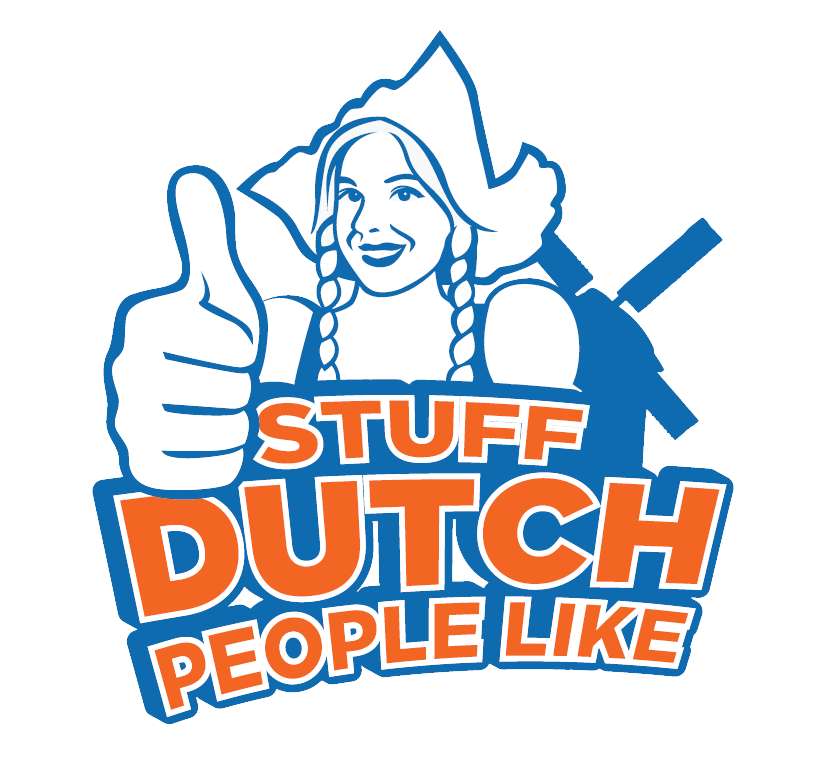
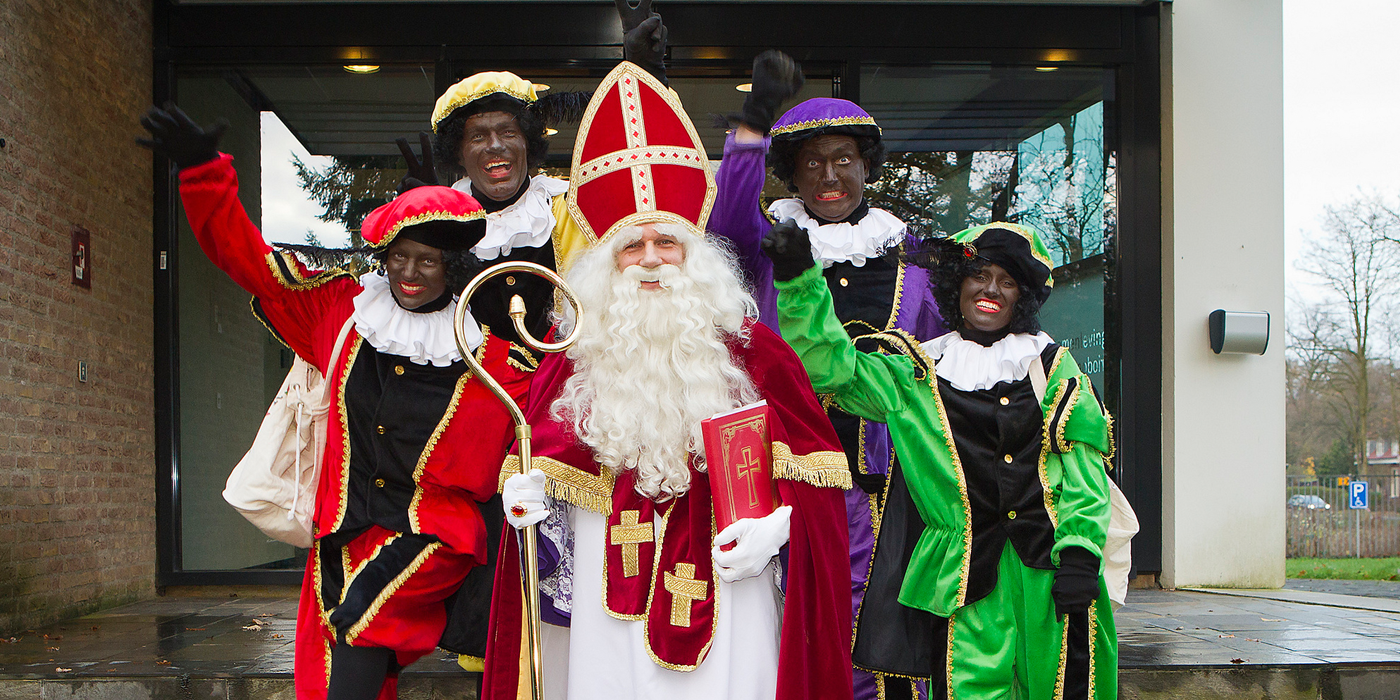
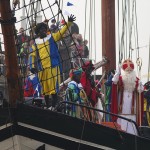
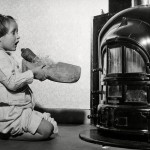
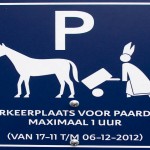
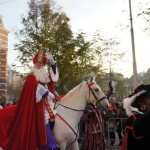
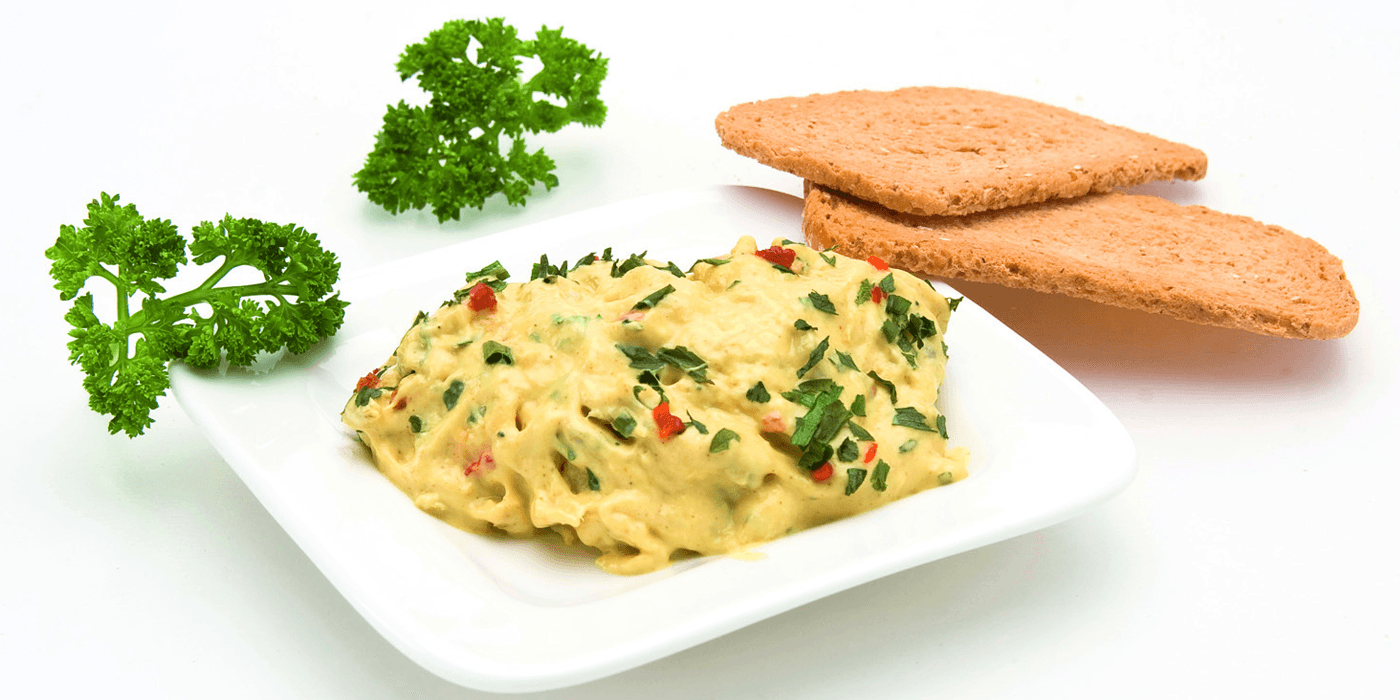

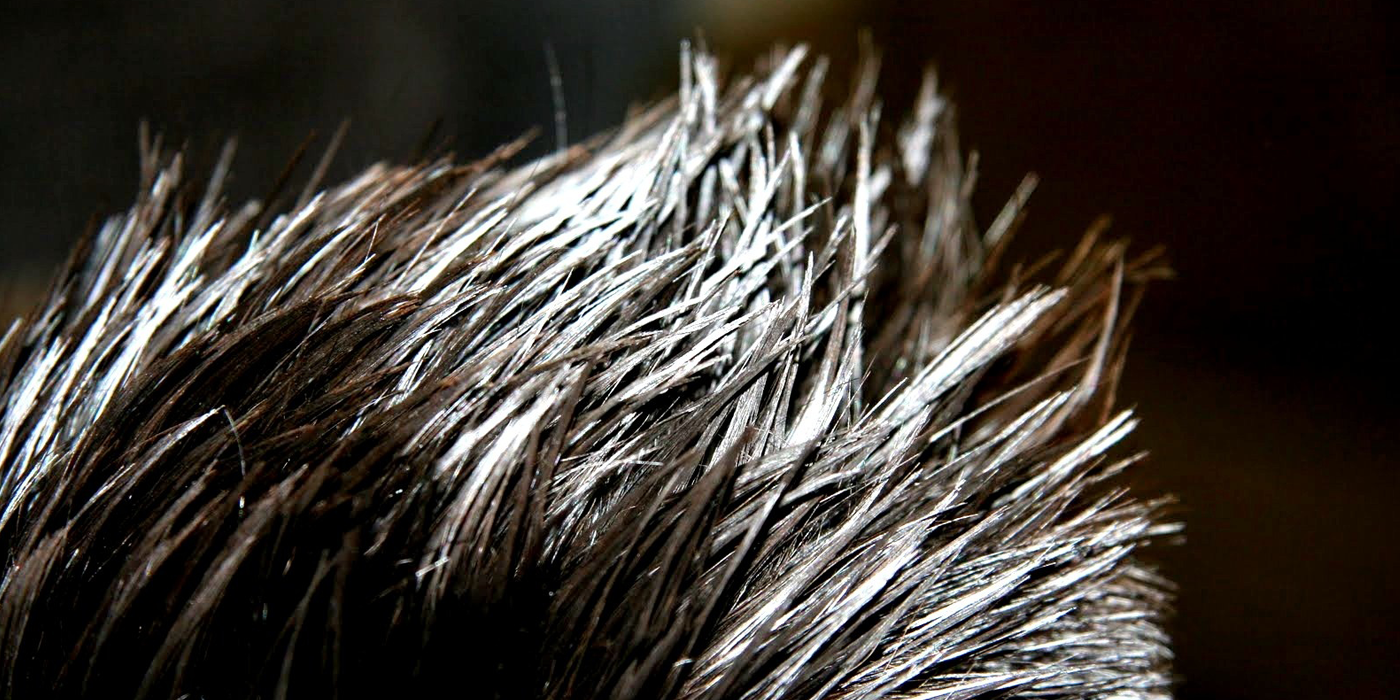
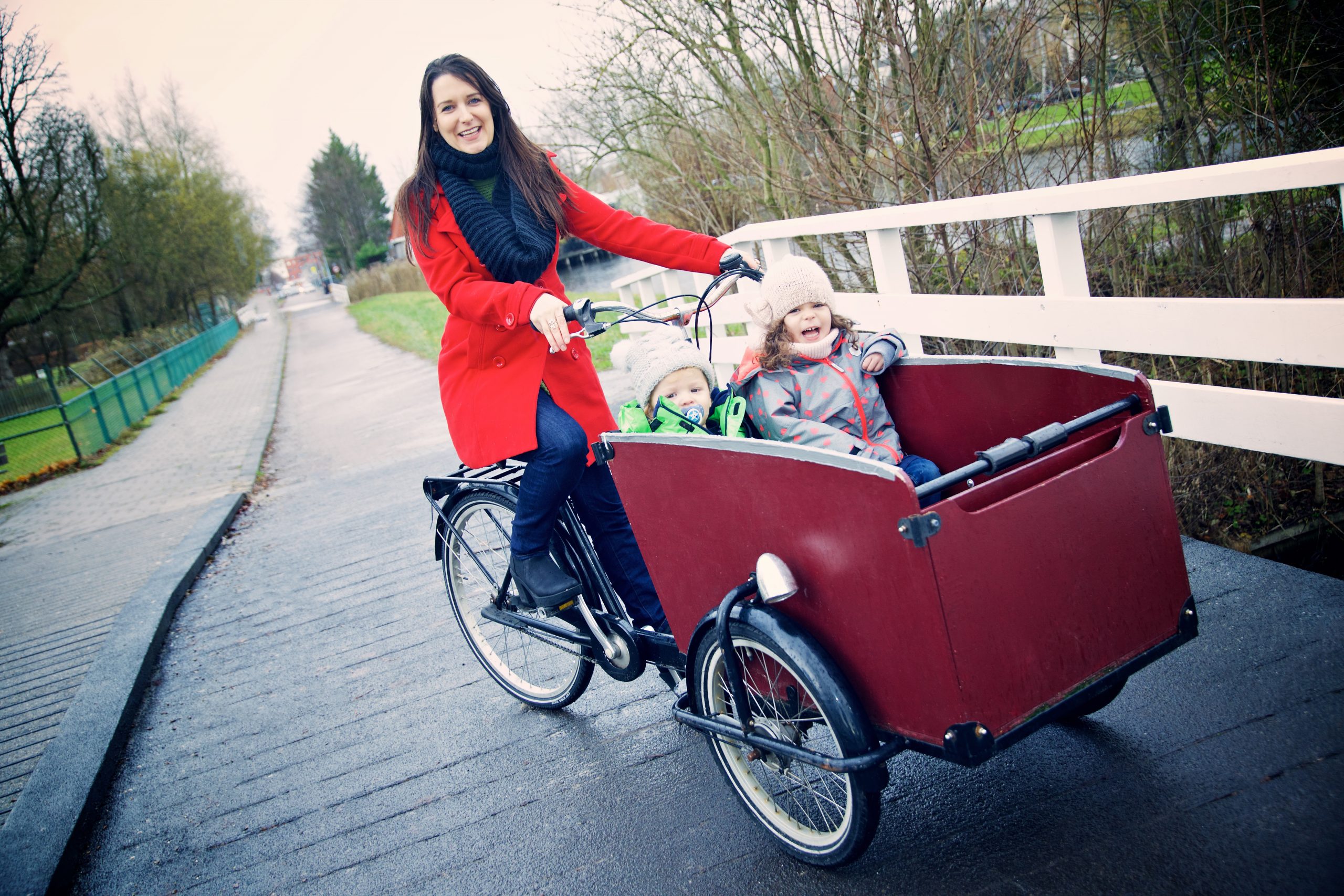
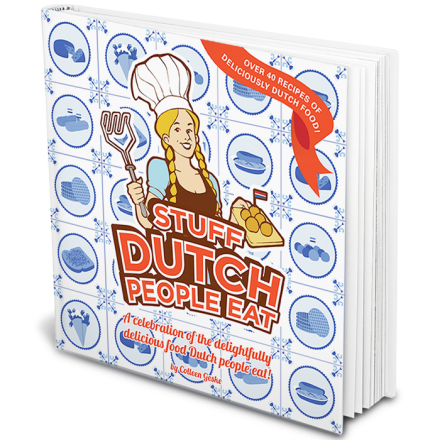
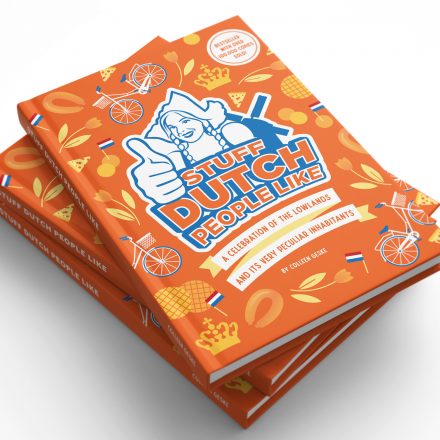

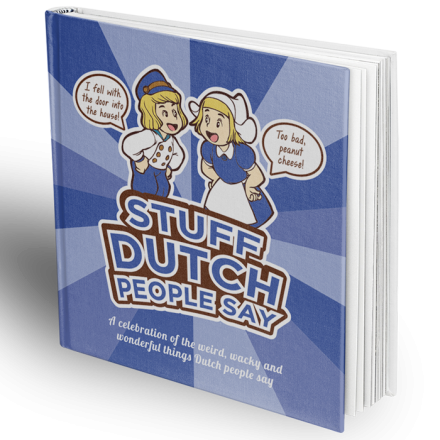
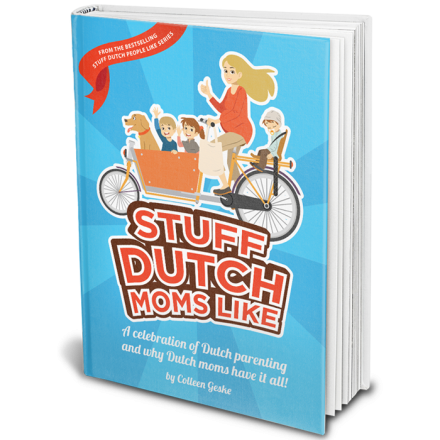
And here I was always told as a kid Sinterklaas came from Spain on his steamboat. My parents wouldn’t lie to me about Sinterklaas, would they? 😛
Sorry folks! We meant to say “Spain”. See –this whole thing is very confusing for us non-Dutch! 😉 😉 Corrected!
With that name you’ll have many laughs in the US :o)
Hehe, says who :P?
Although he is originally from turkey, he now lives in spain and so he sails in from Spain on a boat in late November.
Sinterklaas is originally from Turkey, but nowadays he lives in Spain… Hence the spanish name for the horse.
Ps. Awesome blog
I bet he lives on the “Costa”. . .free medical care for old(er) people! At least that is what I see on BVN!!!
He lives in a castle in Madrid
the name Americo has nothing today with the fact Sinterklaas comes nowadys from Spain..
In the fifties the horse was called Bianca (itialian for white)..
In 1986 the horse was called Jasper.
all other years it had no name and was simply called the horse of Sinterklaas..
listening to the classic Sint Nick songs does confirm that.. it will mention black Petes, it will mention Sint Nick.. so why would the name of the horse not been used if it was historically settled.. simply because it was ‘Sinterklaas Horse’ not Amerigo
It was not until 1990 that the horse was called Amerigo..
Why?
at the Sinterklaas intocht (official arrival in the Netherlands, every year a different place) in Elburg 1990 a white policehorse was used to carry Sinterklaas around.. Its name was Amerigo.
At 9 november 2011 was officially brought out the Amerigo after 21 years retired from its job as the horse of Sinterklaas…
maybe the name of the horse will now officially change again..
but it might stay Amerigo as well, because a complete generation doesn’t know different then the horse of Sint Nick has a name.. most likely it will be just as immortal as Sinterklaass now..
There’s even a song that goes: “het paard van Sinterklaas” which means Sinterklaas’ horse. Thus proving that it didn’t have any name when the song was composed. It’s a pretty marvelous horse too as Sinterklaas rides it on slanting rooftops!
@SDPL maybe you should consider writing a topic just on the horse, which traditionally isn’t exactly white but a roan (schimmel). Also kids put a carrot in their shoes for Sinterklaas’ horse
Sinterklaas rides on his STEAMBOAT from SPAIN! At least that is what they tell the kiddo’s. And no, not a single kid thinks those Black Pete’s are slaves. They merely think of them as heroes. I did when I still believed.
I always believed that Zwarte Piet was black because they have to climb through chimneys all the time… makes sense, right?
Yes, that’s how the story originally went. And it makes sense, too, as they did enter the houses through the chimney, so that all the soot would stick to them. Now the whole racism thing should stop, or else we can start on Santa’s elves being derogatory to dwarfs. Oh, sorry, I meant ‘people of shorter than average height’ (God I hate eveything PC!)
You don’t get afro hair like zwarte piet by going through a chimney or big red lips. Most of the zwarte piet I have seen talk with a afro Surinam accent. Zwarte piet is Sinterklaas’s black slave and it is insultibg to black people.
Bama, is right, but most Dutch will never admit it. They’re simply blind for there own flaws. One of our less appealing curiosity’s.
@Bama:
Zwarte Piet is only insulting to dumb people. Even if someone insists that they are black people: THEY GIVE AWAY FREE CANDY! Zwarte Pieten are hero’s in the eyes of all children. It will only make people like negro’s more when Zwarte Pieten are interpreted as such.
And you say that they are slaves. You just assume they don’t get paid. Now THAT is racist.
I have never heard a Zwarte Piet with a Surinam or other accent.
Even if they have black curly hair ans red mouths (which just looks nicer) I will still see them as covered in soot. Stop making problems where there are none.
Yes that was also my impression as a kid and still is.. there’s a childrens song; Zwarte piet zo zwart als roet, meaning; ”zwarte piet” black as soot.. i presume it has something to do with the ”chimney-climbing”…
In the USA Santa comes down the chimneys but stays white. Maybe American chimneys are cleaner
Hehehe, that is a good one. I’m Dutch and I understand the sensitivities. But I honestly as a child never linked zwarte piet with my neighbours from Surinam.
The discussion reminds me of that Boston legal episode where a teacher get sued for dressing up as a witch during Halloween, as being offending to the Wicka religion.
I had always an information that Sinterklaas is coming to the Netherlands from Spain and not from Turkey. And what about the following: if a child misbehaves Sinterklaas takes it inside his big sack and takes with him to Spain…Do I have the right information? Correct me, please, if not.
Absolutely correct! Black Pete will take you and put you in his jute sack. (Seems that jute is also jute in English…). But you could also get whipped with a “roe” (twigs bound together) or find a bag of salt in your shoe.
That is a story no longer told to the kids nowadays. About the beating with a “roe”. The salt story i have never heard of. And i am 35 years old living in Holland.
@frederik: the salt bit is correct. I am 50 yeaqrs old and I remember it well… when I found out that it was all but a story, I put salt in my fathers shoes!
The story about the roe is still told in the song: ‘wie zoet is krijgt lekkers, wie stout is de roe’
I shortly read twice that the not pretty ones become coal in their stockings from Santa Claus, who is not Sinterklaas but the kerstman. Guess it’s the American Sante Claus.
Zwarte Pieten are black because they have to enter through the fireplace 😉
Great post; just some additional info on the shoes and the gifts:
Traditionally, Dutch kids would put a wooden shoe in front of the fire place, and fill it with hay and a carrot for Sinterklaas’ horse. And they’d sing a short Sinterklaas song to ensure that Sinterklaas would show up to fill the shoe. Sinterklaas would ride his horse on the roofs of the houses (no word on how he got there!), and zwarte Piet would go down the chimney to fill the shoes with mandarins, pepernoten or chocolate. Small things; setting the shoe is equivalent to stockings in North America. We would be allowed to set our shoes a few days before the 5th.
The real gifts on Pakjesavond would arrive in a burlap bag, usually dropped off at the front door. There would be a loud knock on the door, but Piet would disappear, leaving the bag. The bag is significant, as this is the bag in which zwarte piet takes stoute kinderen (bad children) back to Spain!
Placing yor shoe next to the fireplace on December 5th is a bit late. This shoe tradition is a kind of warming up in the weeks between Sinterklaas’ arrival mid November and December 5th. On December 5th kids will find the big jute bag at the front door with lots of presents.
But nice summary of this Dutch tradition.
That’s right, the Dutch start setting their shoes way before they 5th of Dec!
historically it was placing your shoe at the firenight at the sinterklaas eve.. so place it on the 5th and you will find a pressent on his ‘bday’ the sixth of december..
commerce has transformed the whole concepts.. some kids are allowed to place their shoe at the weekends.. some will do it every day from the moment Sinterklaas is in the country..
but offically its just like Christmas.. you hang your stocking the night before christmas and on christmas morning you find your pressent..
so the writer is correct when she speaks of placing your shoe at the 5th of december at the fireplace… all other nights are bonus
the jute zak of pressents is a newer invention.. black pete carried the sack and took out 1-few pressent for each kids.. we nowadays seem to have robbed him of the back and keep it all to ourselves grinn
Niet ouwehoeren met onze sinterklazen en zwarte pieten, vriend.
translated: don’t talk shit about our sinterklaas and black peters, my friend.
The placing of shoes doesn’t actually happen on December 5th. The placing of shoes by the fireplace/door/radiator happens in the time between Sinterklaas his arrival and December 5th.
At December 5th something else happens involving (mostly larger and more expensive then the ones in the shoes) gifts. (the shoe gifts are comparable with filled stockings at christmas.)
Early in the evening of December 5th the family hears a loud knocking on the door. When the children open the door they find one or several big sacks with presents in it. Sometimes Zwarte Piet and/or Sinterklaas is still there to pay a visit to the family but most of the time they will be gone because they have a lot of other presents to deliver in one night. (the gifts in the sacks are similar to the gifts under the christmas tree.)
That’s correct 🙂
We did not have a fireplace, so we would put our shoes underneath a rear window in the living room, and my mom or dad would open the window a crack (even mid-November) so either Sint or Piet could come in. Only dawned on me years later that shuffling us off to bed quickly was so the window could be closed again! 😉
I remember my wife’s (she’s American, I’m Dutch) first Sinterklaas with me in the Netherlands.. At night, I secretly placed some pepernoten and such in her shoes and when she woke up the next morning, she thought the horse of Sinterklaas took a dumb in her shoes. I think I never laughed as hard as at that one time when I heard her say this haha 😀
dump, if you don’t want to be dumb
“On the eve of the 5th children place their shoes by the fireplace (…) and eagerly await their presents.”
That’s incorrect, you place your shoes by the fireplace in the weeks between the arrival of Sinterklaas and pakjesavond, possibly one or more times per week and you get small presents (like stocking fillers) the next day (you can also leave an apple or carrot for Sinterklaas’ horse).
On pakjesavond you don’t use your shoes (we didn’t anyway), but you eagerly await the arrival of the big sack filled with larger presents. One of the parents or a neighbour usually bangs on the window/door and quickly leaves, pretending it was Zwarte Piet. When the children open the door, the bag is there. Alternatively, you can hire a Sinterklaas or ask a friend to play Sinterklaas and he visits in person and hands out the presents from the sack while reading in the big book whether the child has been nice that year.
and the carrots to horse?
The name of Sinterklaas’ horse has only been “Amerigo” since 1990, when a police horse named Amerigo was chosen to be Sinterklaas his horse during the national entry into the country which is aired on tv. Ever since then he has been known as Amerigo, even though before that he was just known as “Sinterklaas’ horse” or “Sinterklaas’ white horse”. This year [2011] Amerigo has been reported to be enjoying his retirement after 22 years of carrying Sinterklaas around during the time he is in The Netherlands. The current horse has not been named, but since people are used to calling the horse Amerigo by now, I guess people will refer to him like that 😉
(Source: http://nl.wikipedia.org/wiki/Amerigo)
I was always told his name was “Schimel” (I’m not sure of the spelling) but apparently it’s the dutch word for mould (because of his grey spotted appearance)
Thelma, your sort of right there… the correct spelling is schimmel, and it is the word for the kind of horse it is (race?) White grey-ish with sometomes spots on it. (see image for example: http://www.vliedbergstud.com/mediapool/42/426977/resources/big_14860395_0_400-316.JPG )
In Belgium the horse’s name is Slecht-Weer-Vandaag.
One day my husband and I had a heated discussion in Albert Heijn about whether or not any future children of ours would get presents at Sinterklaas and on Christmas. My husband did not like the idea of shelling out money for presemts on two occasions (!) and said they’d only believe in Sinterklaas!
We just got presents for both as kids, as having to tell us that either Santa Claus or Sinterklaas wasn’t real would probably have opened up several questions.
I only ever got presents for Sinterklaas, and so did most other people I know. Only friend I had that got presents at both occasions has a mom from the US. Most families only start giving presents at Christmas day after the kids are too old to believe in Sinterklaas, if they ever switch over from Sinterklaas to Christmas at all.
You are so right about not being able to say anything critical about Sinterklaas. My Dutch wife has not been very happy with some of the Sinterklaas jokes over the last few years.
Whats is the punishment in being taken to Spain?
that IS. I completely freaked out when grown-ups said that he just got the nicest kids presents, and maybe, when you weren’t nice enough that year, you wouldn’t get presents but were back to spain… That part doesn’t need explanation. It is as scary as it is. OMG a WHOLE year away from your parents and friends.. You think twice to beat up your brother in the weeks for (5th december) Sinterklaas 😉 The Sint has luisterpieten (eavesdrop pieten) everywhere!
About the Pieten being black: I used to think this was a heritage from the Moorish occupation of Spain in the Middle Ages, but then I read Jane Harrison’s (more than 100 years old) book ‘Prolegomena to the Study of Greek Mythology’ – what has THAT got to do with that? Well: she mentions a figure in ancient Greek times with a hideous face, that mothers threatened their children would come through the fireplace and take them, if they were bad … Sounds familiar, doesn’ it?
Another explanation is that the skincolour of ‘Zwarte Piet’ originates from the black slaves working on the Spanish ships. These ships brought trading goods (think about the gifts on december 5th, and the tradition of the mandarin organges) to Holland. Also the strange clothing from Black Peter probably originates from the clothes these slaves wore.
Slaves had gold earrings
A nice article, just a small correction. The hard, nut-like cookies are called “kruidnoten”. Pepernoten are the somewhat more squishy squarish-looking cookies
You are completely right. But everyone calls kruidnoten pepernoten. There are some people who try to correct this (telling everyone: you call this “pepernoten” but they are in fact “kruidnoten”) but they are very annoying.
So true!
Dearest moderator, could you ehm please remove my email address or the complete post. I was a bit too fast. Thank you
“On the eve of the 5th (pakjesavond) children place their shoes by the fireplace” Like others mentioned before, this is incorrect. Kids place their shoes by the fireplace/door in the weeks before the 5th of December. They sing songs and place carrots/apples/sugar for the horse in their shoes and sometimes a wishlist. Kids get small presents, like sweets or a pen, etc. On Pakjesavond, Piet drops off a big bag filled with presents in front of your door.
My boyfriend and his family, his friend and his family, are all from Brabant and do the shoe thing the night before Sinterklaas. They wake up on the morning with some small gift in the shoe, like a bag of sweets or some kruidnoten. They don’t do placing shoes before then and haven’t heard of that. So it really can vary, not sure if it’s by region or not. Of course they do also do the presents in a sack thing for the kids, but that is their shoe tradition.
I’m in Brabant and all of our nieces and nephews place their shoes out, and get small gifts, in the weeks leading up to pakjesavond.
The horse is called a Schimmel (mould) , as it is always white it looks like mould , hence the name ..( and the real lame joke: who is the oldest man in the world? Sinterklaas, he has Schimmel between his legs) .Not only does a neighbour knocks on your door and leaves the presents, if he did it right he would then go around the house and knock on all the windows, throwing candy through an open window (your parents would tell him waht window would be open
THis is Great – our Sinterklaas comes on a sleigh with 8 reindeer and his helpers are elves. I love Santa and our house is full of cute things I have made over the years. Thank you for sharing this with Andrew and I
love always
Tery
Having livd d 53 years in Canada, we celebrate Sinterklaas each and every year. Boy, are we glad to be far removed from all the hallabaloo that’s of and on being raised in my homeland. Sinterklaas always will be a family celebration and has been throughout centuries a heartwarming tradition for young and old. Please, leave political correctness alone for just a day or 10. That’s not too difficult?
Great blog. Expect a rise in traffic. It’s spreading like wildfire in my dutch circle. Also, an article on dutch comfort food would be cool. Poffertjes, oliebollen, bitterballen etc…
Thanks!
I enjoy your blog. You are right about me from time to time!
But I just wrote this comment to be able to follow you 😉
Please, keep on writing!
there is no such thing as french flanders. there’s flanders, and there’s french belgium which is wallony.
The north west of France, around Lille (Rijssel) is the French part of Flanders.
I was told back in 1955 that they (Zwarte Piet) were Moors (or Blackamoors in English). As to their clothing, have a look at the Swiss Guards in the Vatican, same era. This is a truly ancient tradition which does date back to when part of Spain was occupied by the Moors. Whilst Saint Nicholas was the Bishop of Mira (or Myra), he wasn’t born there. There are a couple of towns around the Mediteranean that claim that fame. Incidentally, in the Eastern Orthodox church he is also the patron saint of Sailors. It was not uncommon for sailors from the Communist countries to leave small offerings for Saint Nicholas in Dutch Catholic churches. I’ve lived in Oz for 45 years now and we still exchange a little present on December 5 (and have a Chocolate Letter if we can get hold of one). I’m very glad Sinterklaas is still going strong back in Holland.
The Dutch do go crazy for Sinterklaas, he was one of the first things they decided to tell me about when I moved over for the year. Great first impression “Hi, one of our traditions appears to be a bit racist and we love it” 😛 I saw him arrive (Intocht) in Utrecht in November (I’ve also linked your blog to mine as they fit quite well together with mine from the student perspective – keep writing it’s really funny!)
You forgot to mention that the kids have to sing a song about sinterklaas before they go to bed and the next day there’s a present in the shoe!! Children can do this maybe two times a week when he is in holland.
Zwarte Piet is black from coal in the chimnees. Originally he’s light-brown, because he’s a Moor (Arabian man). St. Nicolas is a white Turkish noble man, and ‘Zwarte Piet’ helps him trowing presents through the chimnee.
Check the article by Sjaak Bral dated the 24th of december 2011 on top of page 6!
Very funnily stated and I totally agree. I think the Sinterklaas feest is ridicilous and if I ever get kids I don’t think I’ll make them believe this silly story. So not all of us dutchies celebrate this weird fest”) Pepernoten are good though, I mean real pepernoten, not the kruidnoten!
Just a protective dutch person, putting it out there .. So you would rather have them believe in a fat jolly guy who lives in the north pole, wears fluffy clothing, flies through the air in a sleigh and has elves ??? All very believable ….yeh right!
Sinterklaas is actually much closer to the real man ( Saint ) and the real events in history, not Santa ??
When i was a kid Sinterklaas used to look me up in his ancient book where he had all the children listed and where all deeds good and bad were spelled out. I’m not sure if this is common practice but it does remind me a lot of another old man woth a long flowing white beard who’s usualy depicted in light blue tather than red and gold and who lives a bit higher up than most chimneys.
Also i’ve read somewhere that Sinterklaas riding his (roan)white horse on rooftops is supposed to stem from Wodan the Germanic god who rode his six legged white horse across the skies, apparently Sinterklaas’ horse must be a descendant of Wodans horse and thus have the ability to ride on rooftops!
Love the Sinterklaas post!
While living in Limburg, my Dutch friends celebrated Sinterklaas by putting shoes out on Dec. 5th (waking up to small candies and presents on Dec. 6). Then they received larger presents on Dec. 25th from Santa Claus (not the same as Sinterklaas – more like Father Christmas). Perhaps they incorporated a more “American” Christmas in with the Dutch traditions because of being around a lot of Americans from the local military installation or perhaps from the influence of American tv. Either way it was a good time.
Haha I just realized how weird it is that I used to put my shoe in front of the radiator 😛
We are living in Drenthe, and of course we like Sinterklaas. We celebrate Sinterklaas on Dec. 5th. We eat al lot of peppernuts, and other candy. We get a lot of surprise. When we were a kid we loved blackpieten
xxxxx
let me help you with this black face mythe because it makes me sick that people would think we are some kind of rasist!
The story of the “zwarte pieten” is that they are white people that help him.
but because they come through the chimney they become black faced…because of all the dirt in the chimneys.
as soon as sinterklaas arrives in holland,the kids can put their shoe next to the chimney with a bowl of water and some carrots for the horse.
So the zwarte pieten will come down everyday for liks 5 weeks(until it’s sinterklaas’s birthday on the 5th of december) and give you candy or a small present if you were nice.
On the 5th of december it’s his birthday and if you were a good kid you will get presents(toys,games,candy ect ect)
And that is the story why the Pieten became Black (Zwart=Black Piet= common dutch name) Zwarte Piet= Black Piet…BECAUSE OF THE CHIMNEY!!!!!
Then what’s with the big afro wigs and red lipstick that people also wear? That is depicting a caricature of a black person and that is VERY racist!
That is the MODERN story to try to PC-ify it, not the original one. Zwarte Piet was first mentioned in the 1840s in the book “Sinterklaas and his Servant” and was described as a servant/slave. The book was removed from publication in 1950. Only in the mid-late 20th Century was there a move to there being multiple Pieten, perhaps influenced by the idea of Father Christmas having multiple helpers. The latter half of the 20th Century also saw the introduction of the chimney sweep story.
The more you know!
The categorization of Zwarte Piet is a harsh reminder of most Europeans’ subconscious view of “Zwarten” as outsiders to the culture. The caricaturized black skin color and red lips are evidence of this; were the icon a white-skinned person, his lips would be pink, not reddish. The clothing of the Zwarte hearkens the paintings and of the culture and callousness of European slavery, whereby rich Europeans considered it a status symbol to bring African men to Europe, dress them in finery, and completely objectify them. When the United States started to rear its head as an economic force, due to its ability to produce cheap cotton, Europeans feigned hatred for slavery. Since the majority of Europeans were poor peasants who were little more than slaves, there was no economic benefit to Europe to keeping slaves, whilst there was great benefit if slavery could be abolished, and thereby put a dint in the U.S. economy, which was dependent upon slaves.
It is notable that Jan Schenkman’s 1850 book Sint Nikolaas en zijn Knecht Piet depicted Zwarte Piet as a “servant”, since obviously the real term… “slave” would not befit a Christmas legend, and did not serve Europe’s self-congratulatory, farcical abolitionist movement. In short, the iconization of “Zwarte Piet” Is way to make Vervreemding en ontmenselijking van anderen appear to be something innocuous, so that Dutch do not need to come to grips with their bigotry.
This is a great post, but you simply must expand on surprises (pronounced “soo-PREE-zuhs”) – that’s the elaborate, arts&crafts (“geknutseld” is the word I’m looking for) packages that the Dutch adults make each other for Sinterklaas. Imagine you have a friend who is a truck driver, and you’re wrapping his gift, and you thought to yourself “Wouldn’t it be great (leuk) if this gift looked like his truck”. So you make a cab out of cardboard that opens up to reveal a pipe cleaner engine and has wheels made from the souls of old shoes. Dutch make crazy things like this for each other *every year*! Usual it’s done Secret Santa style for frugality’s sake, but if you’re very special a friend might make you a surprise for Sinterklaas just because.
nice text 🙂
but the plural of zwarte piet is zwarte pieten, not zwarte piets
haha love this website! gonna send this thing about sinterklaas to my english friend! 😛 complete with wooden shoes “sloffen” filled with sinterklaas candy 😛 😀
Black Pete was originally a Turkish helper if Sinterklaas that masked his face to prevent to be recognized when they would steal from the rich. In the 1970’s the appearance changed to the looks of an African.
Haha, awsome blog and nice to see non Dutch views on Sinterklaas. I am white but in The Netherlands they just call me Roy. Like my black friends, they have names to. I know that this confuse Americans because they are focussed on the white / black stuff and keep the racism alive. Let me make one thing very clear: zwarte pieten are big heroes. They are athletes, the best climbers, funny and stupid. They can do everything and brings smiles pressents and candy to kids. The zwarte pieten are fantasy characters and the public in Holland is multiculteral. It is only a small group of small minded, self-pity and touchy people who refuse to see the fun, the happynes and the joy. They are the real racists here, couse they only look through their black/white glasses and keep on whining about it. And, with that, rasist is on the agenda again.
Ps, so far i figured it out, the zwarte pieten where invented by Canadese soldiers just after the WW2. They made some fun in the streets and that was a hit.
Have a good one peeps. Enjoy your live 😉
Roy,
Ps my friends, ..Morgan Freeman is totaly right. http://www.youtube.com/watch?v=z2d2SzRZvsQ
Hear, hear!
I have a photo of me taken with Sinterklass and what I believe are called Black Peters ,when I was 4/5 ,, a long long time ago , I often show it to my grandchildren , much better than the so called Santa here in the UK ..
I am Dutch (as can be) and I love Sinterklaas.
The Sinterklaasfeest is a Dutch tradition that doesn’t hurt anyone. If you do feel offended by it, than that is YOUR CHOISE. Fine, make your own choises, you have that right, but don’t make it then other peoples’ faults.
What I do miss in this specific blog, is the ‘Sinterklaasjournaal’, which is a special daily news bulletin on national television made for the children, about Sinterklaas, his Pieten and everything that goes on from the moment the Steamboat leaves Spain, up until Sinterklaasavond (dec. 5th) and it is hilarious (for the kids) and sometimes scary (also for the kids, i.e. when something goes wrong and they loose all the presents) but from an adult point of view also ingeniously made, with intricate story lines, that keep your kids on their toes for the duration of this period. Primary schools generally play along with the chosen story lines and incorporate them (as much as they want to / can) in their own celebrations.
Don’t mess with gezellig affair is right. I have to be carful about some of the jokes I make about Sinterklaas around my Dutch wife :p
Hey,
I asked your book for Sinterklaas! I love your blog!
It’s Zwarte Pieten by the way and not Zwarte Piets…
Okej, this not so-smarty-ass kid, thought Zwarte Piet (not Sinterklaas, cause he was sitting on his horse, which was standing on the rooftop) was getting through the radiator. How he was getting through? With the key to let out some air from the radiators. So my parents needed to lay that key next to the radiator. How Zwarte Piet was able to get that key? Well, he comes through the door to pick it up, so he can get through the radiator to fix the presents. Huh? Totally logical for me.
And it was even before Harry Potter showed his tricks!
In terms of the black Piets discussion, I am pretty sure that the majority of the Dutch households celebrating Sinterklaas see absolutley no connection between the Black Piet and Africans/Surinam etc. In most family’s like mine we believed they are black from the chimney they crawl in to put stuff in your shoe. I have by the way an Indonesian father and Dutch mother, for some people it is nowadays important to mention what the color of your skin is to decide how fierce to respond on comments (thats how far the discussion got now, its a shame).
I am not saying that the black people in Holland are overreacting, I do think changes should be made in order to let everybody live in Holland in a nice way without being discriminated. However the way some people are judging family’s is totally insane, like they are on purpose discriminating all the black people in Holland. You cannot just call anyone a racist because they are celebrating in their eyes a harmless family festivity, however you can educate them what those times mean for you (as a black person in Holland), how it makes you feel and what changes you would like to see.
Just my 2 cents on this 🙂
Good point!
Sadly, the Sinterklaas link on the Complete SDPL page does not work… :/ A quick search solved the problem, but I thought you should know that your link was down. This is as far as I’ve read so I can’t tell you much else that is helpful, except that you don’t have a link number 30 :p
Loving the blog though, very gezellig 😉 And to think that I found it simply by trying to find a culture where more tall people exist!
The categorization of Zwarte Piet is a harsh reminder of most Europeans’ subconscious view of “Zwarten” as outsiders to the culture. The caricaturized black skin color and red lips are evidence of this; were the icon a white-skinned person, his lips would be pink, not reddish. The clothing of the Zwarte hearkens the paintings and of the culture and callousness of European slavery, whereby rich Europeans considered it a status symbol to bring African men to Europe, dress them in finery, and completely objectify them. When the United States started to rear its head as an economic force, due to its ability to produce cheap cotton, Europeans feigned hatred for slavery. Since the majority of Europeans were poor peasants who were little more than slaves, there was no economic benefit to Europe to keeping slaves, whilst there was great benefit if slavery could be abolished, and thereby put a dint in the U.S. economy, which was dependent upon slaves.
It is notable that Jan Schenkman’s 1850 book Sint Nikolaas en zijn Knecht Piet depicted Zwarte Piet as a “servant”, since obviously the real term… “slave” would not befit a Christmas legend, and did not serve Europe’s self-congratulatory, farcical abolitionist movement. In short, the iconization of “Zwarte Piet” Is way to make Vervreemding en ontmenselijking van anderen appear to be something innocuous, so that Dutch do not need to come to grips with their bigotry.
Shortly ago, I read that in the VK our Sinterklaasfeest would be forbidden by law because of discrimination. The English woman who informed us, was very sharply on us.
Angela, I remember from some decades ago, that a burgler was stuck in an American Chimney. I guess that you still have some big ones where lean people/children can go through, so everthing is believable. Here nor Sinterklaas nor Zwarte Piet goes through the chimney. Black Peter was black because he was a chimney sweeper from profession (in an earlier life?).
My mother never could explain to us, how the parcels fell trough the chimney AND through the burning coal stove into our shoes. We were too young to think about non-blacked parcels too. In the old times, childres weren’t ment to think very much by themselves and were badly informed about the daily things and local sequels and were less persistent. The mothers of the radiator-generations have a bigger problem 🙂
Don’t forget taai-taai and marsepein.
Now, Zwarte Piet (they were locally hired help, not Moors or slaves) is black because he went down and up the chimneys of houses where coal was burned for heating and cooking. In my time the chimney was cleaned of soot evey autumn. And, believe me or not, the guys that did that job weren’t exactly lilliy-white.
Nor were the kolenmannen, who brought the the heavy coal sacks to the apartments upstairs. Therefor they wore a “white” carrier from hood to bum and walked in heavy stride.
Putting our shoe next to the fireplace on ‘pakjesavond’?
That’s not how I know it.
We put our shoes a couple of random times between Sinterklaas’ arrival and pakjesavond for candy and maybe a small gift.
On pakjesavond itself, there are no shoes involved. Sinterklaas en Zwarte Piet leave a burlap bag full of present in front of the door. Zwarte Piet knocks and runs away quickly. The kids find the bag with presents, drag it in and get to unwrap one at a time (taking turns).
I’d like to send a gift to my Friends Daughter for the Holiday but I don’t know what is appropriate.